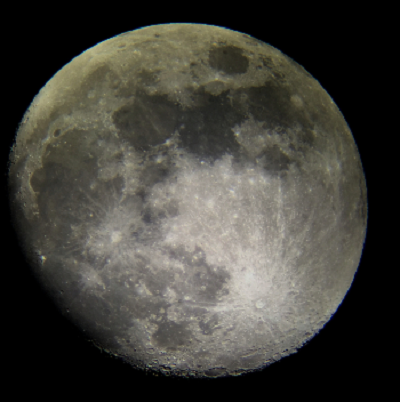Of all the stories we pass on from generation to generation, one of the most persistent is that the Moon is made of cheese. The idea is a very old one, dating back at least as far as 1546 to The Proverbs of John Heywood which carries the line “the moon is made of a greene cheese”.
What if the Moon really were made of cheese? Would our lives be any different? On my quest to find out I headed straight for my fridge, where I found a block of mature cheddar weighing 400 grams. It also measured 14cm x 10cm x 4cm. As density is mass divided by volume, its density is 0.71 g/cm3. The Moon itself – made of much heavier rock – has a density of 3.3 g/cm3. If the Moon really were made of coagulated milk it would be almost five times less dense.
It also pays to assume that the cheese is incompressible. Otherwise the gravitational crush towards the Moon’s core would cause the cheese to separate out into its constituent parts such as water and casein. The Moon would have oceans and wouldn’t be made of cheese at all.
The Moon (along with the Sun) is responsible for the rise and fall of the tides, so a lighter moon would lead to smaller tides. Tides have been important in the development of life, so it is probably wise to maintain the Moon’s mass, otherwise we might not be here to pose the question. Due to its lower density, a cheese Moon’s volume would need to increase – it would have to be 67% bigger to weigh the same. So immediately we’d have a much brighter Moon, as a bigger surface area would reflect more sunlight our way. A cheese Moon would be dazzling.
It would also scupper one of Nature’s most spectacular sights: a total solar eclipse. The Sun and the Moon currently appear the same size in the sky, meaning that the Moon occasionally blocks out the Sun’s disc perfectly. This leads to spectacular views of the Sun’s outer atmosphere (the corona) and jaw-droppingly beautiful effects such as the “diamond ring” and Baily’s beads. Whilst a larger Moon would still temporarily remove the Sun from the sky, it would easily cover up everything, robbing us of the highlights of the spectacle.
What if we want to preserve stunning eclipses? We could keep the size of the Moon the same, but its mass would have to decrease (along with the tidal consequences). A Moon of the same size, but made of the cheese in my fridge, would only have 21% of its current mass. But that wouldn’t protect eclipses either – a less massive Moon would still appear bigger in the sky. As the Moon pulls on the Earth, it tries to keep the oceans in place. As the Earth turns underneath, tidal friction with the water brakes its rotation, slowing the planet down. The consequence is that the Moon recedes to conserve something called angular momentum. The real Moon is currently moving away from us by about 3.8 centimetres every year; the Earth’s rotation is slowing by 1.7 microseconds per century. 620 million years ago the day was only 22 hours long.
A cheese Moon wouldn’t pull on the oceans as strongly and so the Earth’s rotation wouldn’t have been slowed as much. Consequently the Moon wouldn’t have receded from us as much either. Sitting closer to us, it would appear bigger in the sky and still deprive us from a perfect solar eclipse. We’d also have shorter days. Some would say that’s a blessing.
